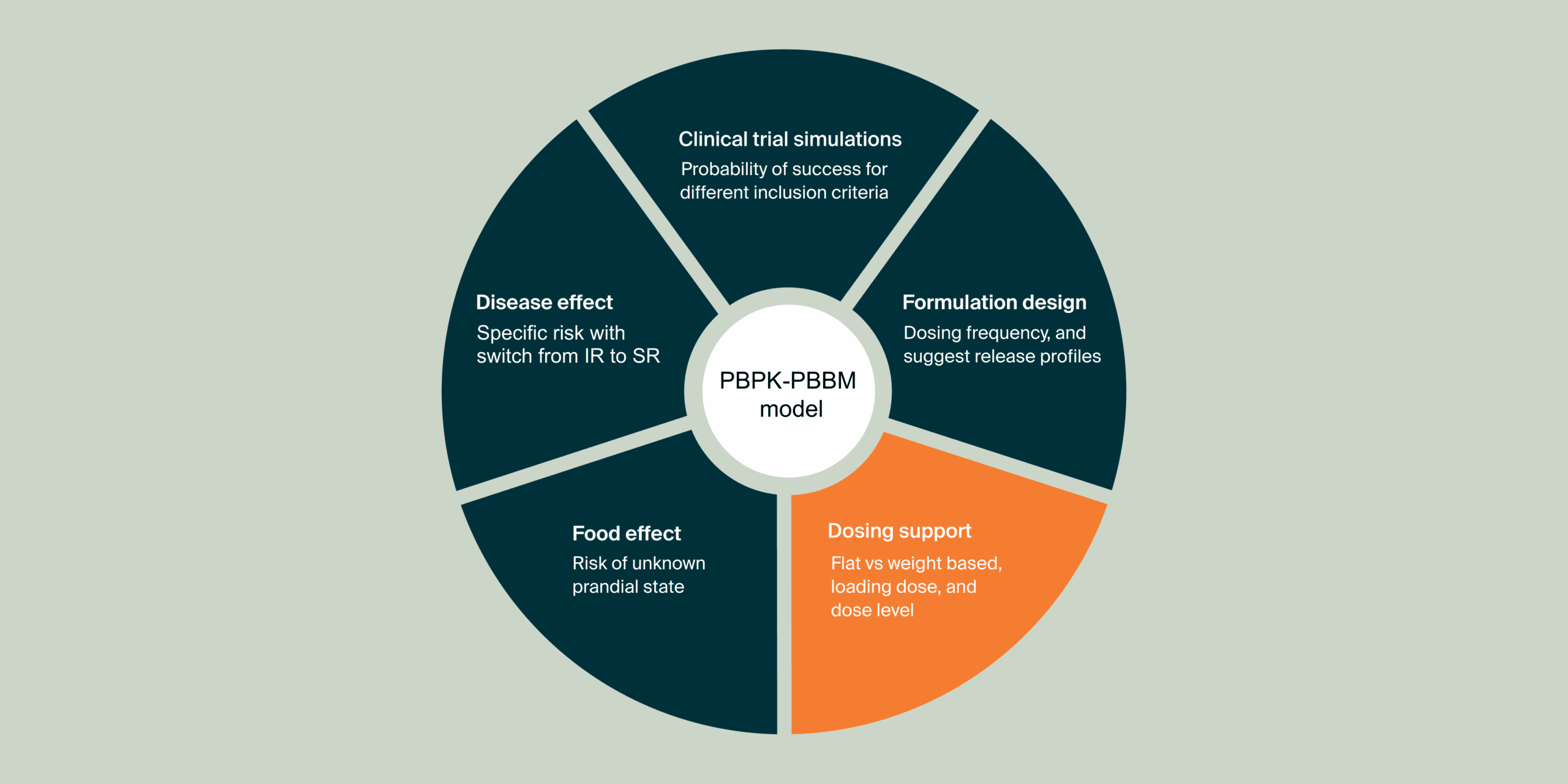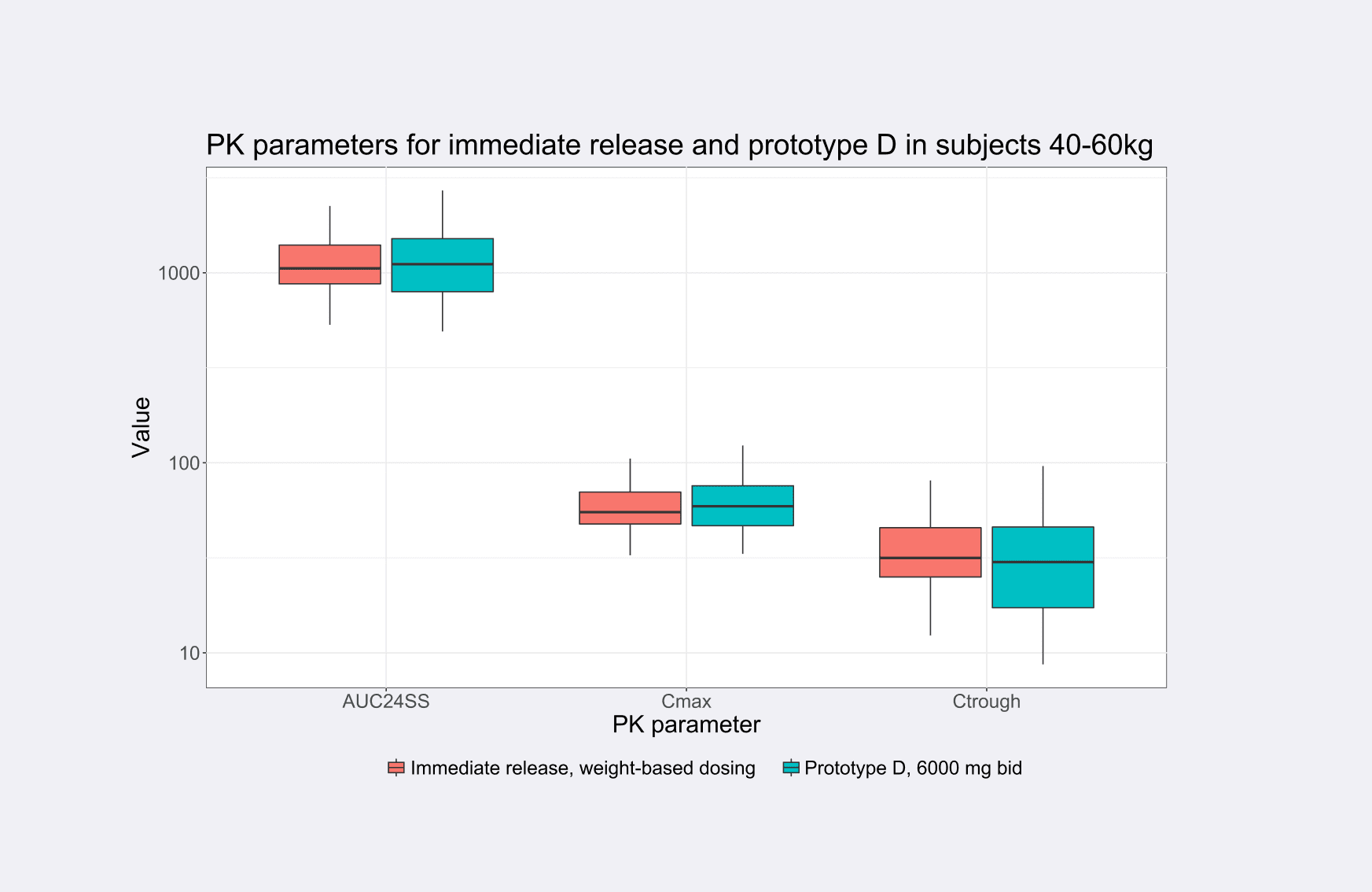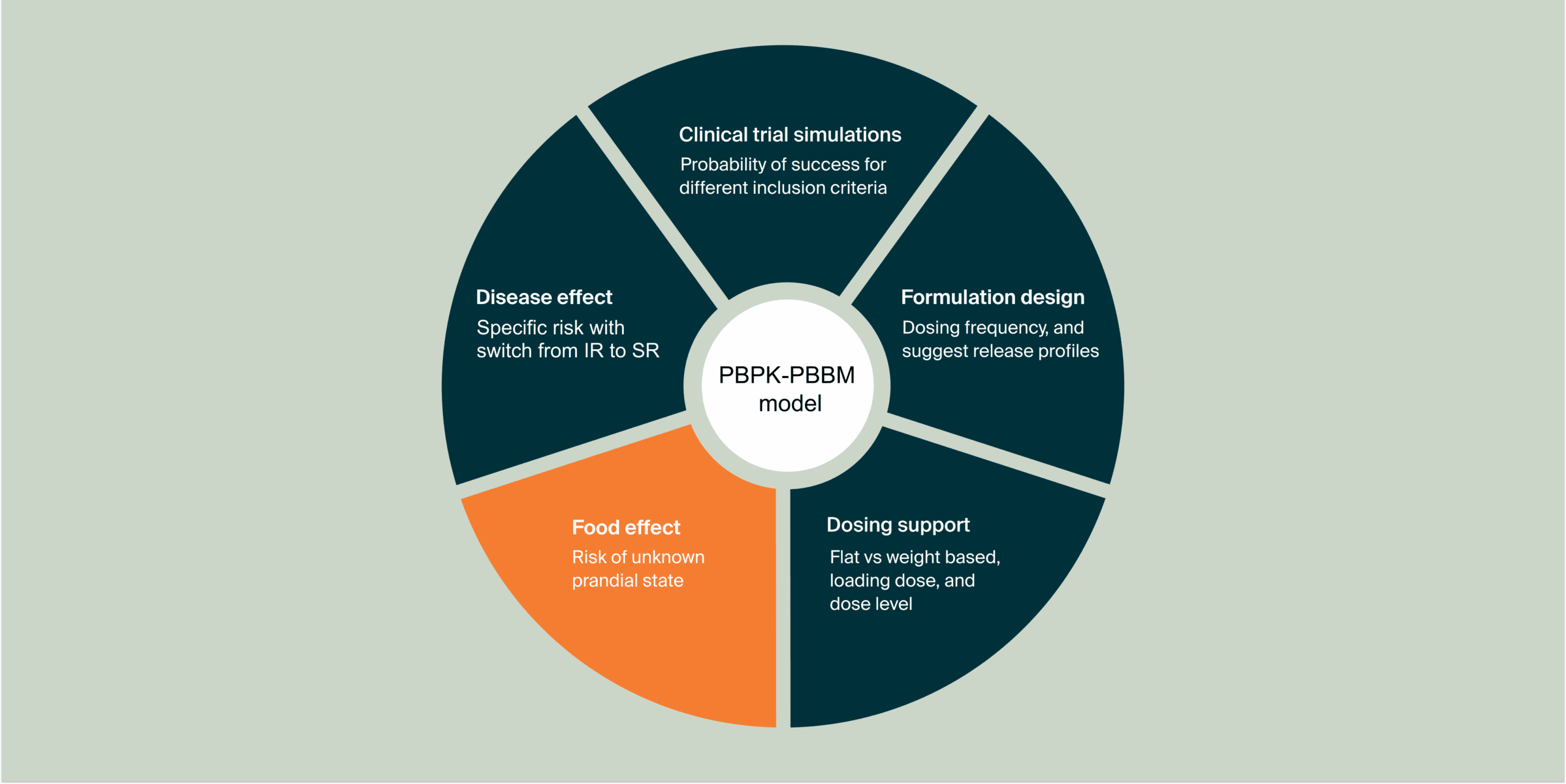
About the case
- Therapeutic area: Infectious Diseases
- Development stage: Phase I
- Modeling strategy: PBPK-PBBM, MIDD (Model-Informed Drug Development)
- Impact category: Inform
Principal question
Which sustained release formulation prototype of flucytosine (5FC) should be selected, and in which dosage, for further clinical studies in HIV patients with cryptococcal meningitis?
Impact
This work supported the prototype selection and informed the dosage rational section in the next clinical protocol and was presented to WHO (Medium impact)

Main challenge(s)
- To confirm that the in vitro dissolution method was discriminant and predictive of the in vivo release.
- To refine the legacy model built solely from literature and in vitro dissolution data using first clinical data.
- To generate hypothesis about the release and absorption of 5FC along the gastro-intestinal tract.
Pharmetheus role
Pharmetheus was responsible for the model-informed strategy and the PBPK modelling and simulation (clinical protocol and World Health Organization, WHO).
Methodological approach
Physiologically-based biopharmaceutics modelling, physiological IVIVR by convolution.
See the next case in this series

Food effect prediction and dose selection, using PBPK/PBBM, in the context of a switch from an immediate release to a sustained release formulation
In this Phase I case study, we harness Physiologically-Based Pharmacokinetics (PBPK) and Physiologically-Based Biopharmaceutics modeling (PBBM) to predict the food effect on flucytosine (5FC) pharmacokinetics in the context of a switch from immediate release (IR) to sustained release (SR) in HIV patients with cryptococcal meningitis.